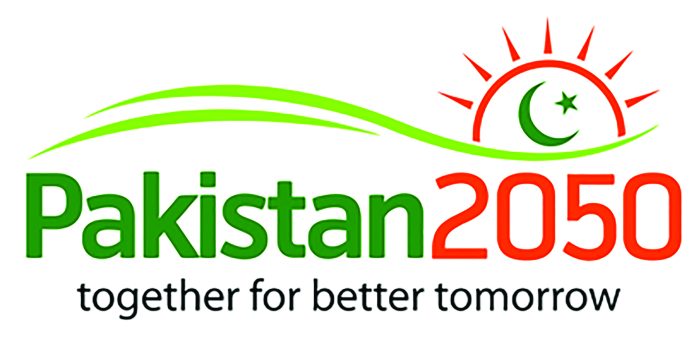Pakistan Vision 2050 is an ambitious plan designed to guide the nation into a new era of development, prosperity, and global relevance. This comprehensive framework covers various sectors, from economic growth and social development to technological advancement and environmental sustainability. By mid-century, the vision aims to transform Pakistan into a self-reliant and progressive state. However, while progress has been made in some areas, the energy sector crucial to all other development requires more urgent and focused attention.
Vision 2050 is not just a strategic plan; it is a holistic approach to national development, addressing both immediate needs and long-term goals. At its core, the vision seeks to enhance Pakistan’s global standing by building a strong, inclusive economy, improving infrastructure, and fostering innovation. It also prioritizes human development, recognizing that the nation’s greatest asset is its people. Education, healthcare, and social welfare are key pillars, ensuring that every Pakistani has the opportunity to contribute to and benefit from the nation’s growth.
Economically, Vision 2050 aims to diversify Pakistan’s industrial base, reduce dependency on foreign aid, and increase exports. By encouraging public-private partnerships and attracting foreign investment, the vision seeks to create a vibrant economy capable of withstanding global shocks and ensuring sustained growth. The development of Special Economic Zones (SEZs) across the country is a key aspect of this strategy, providing an environment for industries to flourish and create jobs.
In the social domain, the vision emphasizes reducing poverty and inequality through the expansion of social safety nets and the promotion of gender equality. Additionally, Vision 2050 places a strong emphasis on sustainable development, aligning with global environmental goals to ensure that economic growth does not come at the expense of ecological balance. This includes the protection of natural resources, the promotion of green energy, and the implementation of policies to mitigate climate change impacts.
Among the many components of Vision 2050, energy stands out as a critical area underpinning all other aspects of development. A reliable, affordable, and sustainable energy supply is essential for industrial growth, infrastructure development, and improved living standards. Recognizing this, Vision 2050 outlines an ambitious energy strategy, including a mix of traditional and renewable energy sources, with a particular focus on harnessing Pakistan’s abundant natural resources.
Vision 2050 sets specific targets to transform Pakistan’s energy landscape. Key goals include increasing the total energy generation capacity to 120,000 MW by 2050, with at least 30% sourced from renewable energy. The vision also outlines the expansion of nuclear energy capacity to at least 40,000 MW, recognizing its critical role in providing a stable and sustainable power supply. Additionally, the vision emphasizes reducing reliance on imported fossil fuels, targeting a 50% reduction by 2030 and complete energy independence by 2050.
However, current progress falls short of these targets. As of now, Pakistan’s total installed energy capacity is approximately 41,500 MW, with renewable sources contributing only about 6% of the energy mix. Nuclear energy, currently contributing around 8% to the national grid, remains far from the envisioned target. The slow pace of progress, particularly in expanding renewable and nuclear energy, underscores the need for more decisive action.
Several projects were highlighted under Vision 2050 to achieve these ambitious targets. These include major hydropower projects like the Diamer-Bhasha Dam, renewable energy initiatives such as the Quaid-e-Azam Solar Park, and the expansion of the nuclear energy sector with the development of the K2 and K3 nuclear power plants.
- Diamer-Bhasha Dam:This project is crucial for both energy generation and water management. Once completed, the dam is expected to add 4,500 MW to the national grid. However, progress has been slow, with completion now expected around 2028, well behind the original schedule.
- Quaid-e-Azam Solar Park:Located in Bahawalpur, this solar park is one of the largest in the world, with an expected capacity of 1,000 MW. Currently, the project has reached 400 MW, but further expansion has been sluggish due to technical challenges and inconsistent policy support.
- Nuclear energy projects:K2 and K3: The K2 and K3 nuclear power plants, part of the Karachi Nuclear Power Complex, represent a significant step toward achieving the nuclear energy targets set in Vision 2050. These plants have added a combined 2,200 MW to the national grid, significantly boosting the country’s nuclear energy capacity. Chashma 5, which will generate 1,200 MW, is in the construction phase. Despite these successes, the overall pace of nuclear energy development remains slower than anticipated, primarily due to funding issues and bureaucratic delays.
While progress has been made in several areas since the launch of Vision 2050, particularly in economic and social development, the energy sector remains a significant challenge. The completion of key projects has been delayed, and the energy mix remains heavily skewed towards fossil fuels. Moreover, the lack of investment in nuclear energy, as outlined in Vision 2050, is a significant concern.
Energy is the lifeblood of any modern economy, and for Pakistan to achieve the goals set out in Vision 2050, it must prioritize the development of its energy sector.
This requires not only speeding up the implementation of ongoing projects but also addressing the bottlenecks that have hindered progress. The government must ensure that necessary funds are allocated, particularly for nuclear energy development, which remains a critical component of the vision.
Nuclear energy offers several advantages for Pakistan. It is a reliable source of base load power, capable of providing a consistent supply of electricity regardless of weather conditions. Unlike fossil fuels, nuclear power generates minimal greenhouse gas emissions, making it an environmentally friendly and cost-effective option. Despite these benefits, the government has been slow to release the funds necessary to expand Pakistan’s nuclear energy capacity. The K2 and K3 plants are steps in the right direction, but further investment in this sector is essential to meet the ambitious targets of Vision 2050.
As Pakistan moves towards 2050, the government must maintain a strategic focus on the vision’s goals. While progress has been made, much work remains, particularly in the energy sector. Energy is the foundation upon which all other development efforts rest, and without a stable and sustainable supply, the ambitious goals of Vision 2050 will remain out of reach.
Pakistan’s leadership has shown foresight in crafting Vision 2050, but it must also demonstrate the commitment to see it through. This requires not just policy declarations but tangible actions that align with the vision’s objectives. By prioritizing energy development particularly in the nuclear sector the government can ensure that Pakistan remains on the path to achieving its long-term goals.







